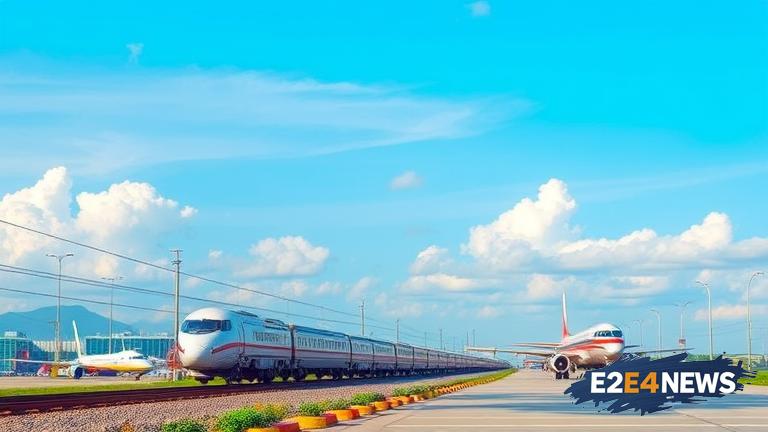Vietnam has announced an ambitious plan to construct rail lines connecting two of its major airports, Long Thanh and Tan Son Nhat. This project aims to improve the country’s transportation infrastructure, reduce travel times, and boost economic growth. The proposed rail line will span approximately 20 kilometers, with the possibility of extending it to other nearby airports and urban areas. The Vietnamese government has emphasized the importance of developing a modern and efficient transportation system to support the country’s rapid economic expansion. By connecting the two airports, the rail line will facilitate the movement of passengers, cargo, and goods, thereby enhancing trade and commerce. The project is expected to create new job opportunities, stimulate local economies, and increase the country’s competitiveness in the region. The rail line will also help to reduce traffic congestion and pollution in urban areas, contributing to a more sustainable and environmentally friendly transportation system. Furthermore, the project will enable Vietnam to better integrate with the regional and global economy, attracting more foreign investment and tourism. The construction of the rail line is slated to begin in the near future, with the government allocating significant funds to support the project. The Vietnamese government has also expressed its commitment to ensuring the project’s transparency, accountability, and environmental sustainability. The rail line will be designed to accommodate high-speed trains, reducing travel times between the two airports to just 15-20 minutes. This will not only benefit passengers but also cargo and logistics companies, which will be able to transport goods more efficiently. The project’s feasibility study has been completed, and the government is currently in the process of selecting a contractor to undertake the construction work. The rail line is expected to be operational by 2025, with the possibility of extending it to other parts of the country in the future. The Vietnamese government believes that this project will play a crucial role in the country’s economic development, enabling it to become a major player in the regional and global economy. The project has received widespread support from local communities, businesses, and stakeholders, who recognize its potential to transform the country’s transportation infrastructure and drive economic growth. In addition to the rail line, the government is also planning to upgrade and expand the airports’ facilities, including the construction of new terminals, runways, and cargo handling facilities. This will enable the airports to handle increasing passenger and cargo volumes, further enhancing the country’s connectivity and competitiveness. The project is part of Vietnam’s broader strategy to develop its transportation infrastructure, which includes the construction of new highways, seaports, and logistics facilities. By investing in modern and efficient transportation systems, the government aims to reduce costs, increase productivity, and improve the overall business environment. The rail line project is a significant milestone in Vietnam’s economic development, demonstrating the government’s commitment to creating a more competitive, sustainable, and connected economy. With its strategic location, modern infrastructure, and favorable business environment, Vietnam is poised to become a major hub for trade, investment, and tourism in the region.





